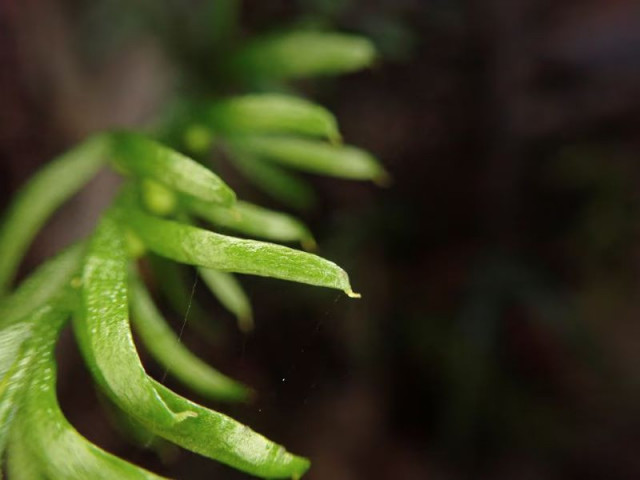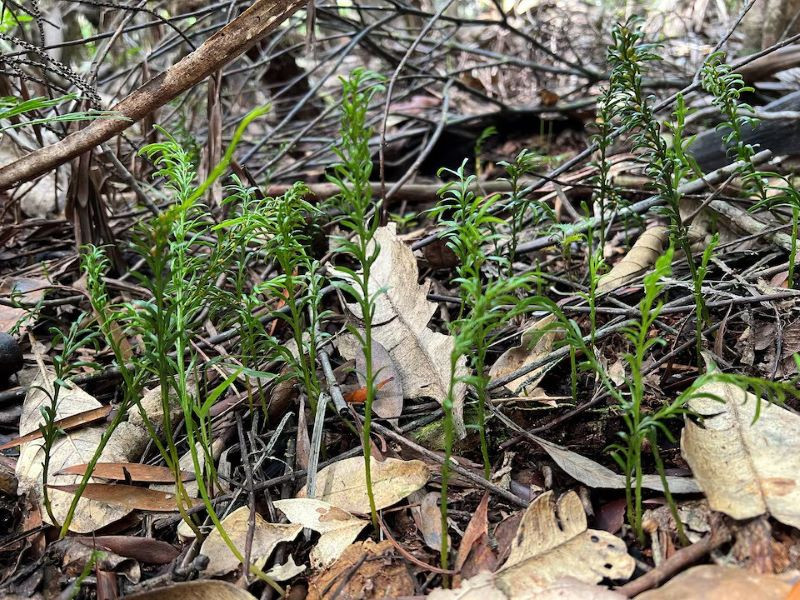Humble fern from New Caledonia boasts world's largest genome
The fern grows primarily on the ground or atop fallen tree trunks in New Caledonia, about 750 miles east of Australia

You thought the living organism with ;"The largest genome might be the blue whale, an African elephant or perhaps a giant redwood tree? Not even close. A human being? Wrong again. That honor instead goes to a little fern that grows in the French overseas territory of New Caledonia in the southwest Pacific Ocean.
New research shows that this fork fern species, called Tmesipteris oblanceolata, has a genome - all the genetic information of an organism - that is 7% larger than that of the previous record-holder, the Japanese flowering plant Paris japonica, and more than 50 times the size of the human genome.
The metric for genome size was the number of base pairs, the fundamental units of DNA, in an organism's cellular nuclei. If stretched out like from a ball of yarn, the length of the DNA in each cell of this fern would extend nearly 350 feet (106 meters), taller than New York's Statue of Liberty, the clock tower for London's Big Ben or India's Taj Mahal. The human genome would extend a mere 6-1/2 feet (2 meters).
The fern grows primarily on the ground or atop fallen tree trunks in New Caledonia, about 750 miles (1,200 km) east of Australia, and on neighboring islands such as Vanuatu.
"We can tell you that this species is not very showy. It is a small plant, typically 10-15 centimeters (4-6 inches) in height, which could easily go unnoticed to anyone who's not specifically looking for it," said evolutionary biologist Jaume Pellicer of the Botanical Institute of Barcelona (IBB), co-lead author of the study published on Friday in the journal iScience
Read: Genome editing can address food insecurity, says KU VC
The specimens used in the study were collected last year on New Caledonia's Grande Terre Island. Its leaf-like structures are not true leaves, but rather flattened stems. It belongs to a fern family whose evolutionary lineage split from other ferns around 350 million years ago, approximately 120 million years before dinosaurs appeared.
A large genome is not considered beneficial.
"We think that Tmesipteris oblanceolata has such a large genome not for any evolutionary advantage but simply because, for a reason that we do not know yet, it has failed over time to efficiently remove non-functional or redundant DNA sequences," Pellicer said.
DNA, which carries an organism's genetic information, is comprised of two linked strands that wind around each other in a shape called a double helix that looks like a twisted ladder. Base pairs make up the ladder's rungs.
Multiple consequences
Genome size has multiple consequences. For instance, larger genomes require more resources for DNA replication, repair and transcription - a process a cell uses to make the proteins an organism needs to function.
"This increased demand can strain the plant's energy and nutrient resources, which could otherwise be used for growth, reproduction and stress responses," said IBB evolutionary biologist and study co-lead author Oriane Hidalgo.

Bigger genomes necessitate bigger cells to house them and take longer to replicate the DNA, slowing down cellular division underpinning growth. This could reduce the ability of a plant species to compete for light, water and nutrients, making it ecologically more restricted, Hidalgo said.
Scientists have wondered why some organisms have large genomes and others do not.
"This is indeed a puzzling question. But what is clear is that there is no relationship between genome size and organism complexity," said plant geneticist and study co-author Ilia Leitch of the Royal Botanic Gardens Kew in London.
There also is no relationship between an organism's physical size and its genome size. The little fern's genome is about 6,000% bigger than that of a blue whale, Earth's largest animal, and about 4,650% bigger than that of an African elephant, the largest land animal. It also is about 1,500% larger than that of the giant redwood, the tallest plant.
Africa's marbled lung fish has the biggest-known animal genome. The fern's is nearly 25% larger.
Scientists have gauged the genome size of about 20,000 organisms possessing clearly defined nuclei, with big genomes the exception rather than the rule.
"Genome size is an important biodiversity character as it has been shown to play a role in influencing how, where and when a plant is able to grow and compete, and respond to environmental challenges such as climate change and pollution," Leitch said.


















COMMENTS
Comments are moderated and generally will be posted if they are on-topic and not abusive.
For more information, please see our Comments FAQ